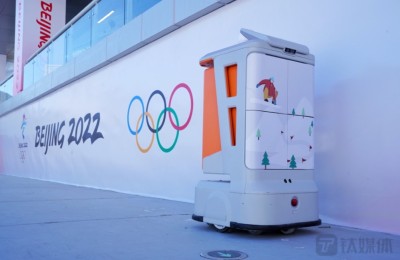New Year’s goods in the supermarket, quiet
Did you go to the supermarket to buy New Year’s goods?
New Year’s goods in the supermarket, quiet
Image source @Visual China
Text | Parity, Author | Blackcurrant, Editor | Zhao
Maybe in a few years, the “New Year’s goods” in the supermarket will be completely forgotten by people.
During the Spring Festival this year, Shen Hao, who lives in Wuhan, still did not go to the supermarket to buy New Year’s goods. This is the third “simplified” Spring Festival in a row that he has experienced just after graduation.
Of course, apart from not following my parents to the supermarket to choose my favorite snacks and home use as I did when I was a child, there are still no shortage of daily links such as New Year’s meals, red envelopes, and Spring Festival Gala.
There are still many young people like Shen Hao. The New Year’s Eve shopping session, which was my favorite as a child, is now omitted due to various factors.
Not only that, the impact of the Internet has made the older generation less interested in going to the supermarket to buy New Year’s goods.
The repeated epidemics, the popularization of online purchasing channels, and the younger consumer groups have all become the real culprits that the Spring Festival supermarkets are no longer crowded.
Based on the above phenomenon, this paper attempts to explore three questions:
1. It’s 2022. Do people still choose to go to the supermarket to buy New Year’s goods?
2. In recent years, what changes have taken place in the way of purchasing New Year’s goods?
3. In the end, who is robbing the supermarket for the New Year’s goods business?
Supermarkets that have been “cold”
“You remember to go to the supermarket to buy two cigarettes to bring to your uncle when you leave.” Shen Hao’s first new year after working was the same as usual, spending it with his parents. He started visiting relatives on the first day of the new year.
In the past three years, because of growing up, Shen Hao became a little less interested in going to the supermarket to stock up on New Year’s goods.
Buying two cigarettes for my uncle who also lives in Wuhan is the only intersection between Shen Hao and the supermarket in the new year. And cigarettes seem to have become the most sought-after among the many “New Year’s goods” in supermarkets.
However, facing the empty cigarette counter, Shen Hao seemed a little overwhelmed. He originally wanted to buy the Yellow Crane Tower (soft treasures) for his uncle, which he was most used to drawing at a unit price of 65 yuan, but was told by the supermarket sales that it had already been sold out.
Pictured: Parity Shooting
After that, Shen Hao traveled around his home, including Wushang and Zhongbai, and the results were similar: the popular products in the range of 400 to 800 had already been sold out, and some supermarkets only had the Yellow Crane Tower 1916 series.
Similar to the situation with cigarette products is alcohol. According to the shopping guide, the sales of popular wines such as Tianzhilan, Baiyunbian and Wuliangye have not decreased. Tobacco and alcohol are still the best choices for consumers to give gifts to relatives during New Year’s Eve.
In contrast, fruit gift boxes are not so popular with consumers. For example, cherries, which will become a must-have for home gifts every Chinese New Year, have risen in price again this year.
As a major importer of cherries, China used to be responsible for 90% of the export volume of cherries produced in Chile. According to statistics, the proportion of inflows to China has dropped to 70% this year.
The decline in production is part of it, and the repeated outbreak of the epidemic has further increased the already cumbersome entry process for imported products. A sharp drop in customs clearance, increased epidemic prevention and shipping costs have all contributed to the final cost of cherries.
According to statistics, during the Spring Festival, the price of cherries on the market has risen by at least 30% compared with that in early January. Prior to this, due to the delayed production season of cherries in Chile, the price of cherries fell once before 2022, reaching around 30 yuan per pound, which also gave consumers hope of realizing the freedom of cherries.
Now that prices have quietly risen again, coupled with the uneven quality of products on sale, the “cherry fever” in the market has begun to cool down.
Parity visited the local AEON supermarket in Wuhan and found that the price of imported cherries (JJ) 5KG gift box and (JJJ) 5kg gift box reached 399 yuan and 599 yuan respectively.
Cherry freedom still elusive parity shoot
In the online channel Jingdong Mall, the price of imported cherries (JJJ) 5kg gift box also reached 499 yuan, an increase of 100 yuan compared with early January.
According to the shopping guide of Aeon Supermarket, the sales of cherries during the Spring Festival this year are not as good as in previous years, and consumers prefer bulk and 2.5kg gift boxes. Among them, the best-selling imported cherries (JJ) 2.5kg gift box is priced at 218 yuan, The daily sales volume can reach 50 boxes, and the supply has been in short supply for many times.
Except for cherries, the sales of strawberries and citrus gift boxes were not satisfactory. It can be seen that the repeated epidemic has a huge impact on imported fruits. The previous news that imported fruits such as dragon fruit tested positive also once aroused consumers’ concerns.
Coming to the traditional New Year’s goods area, compared with the hard-to-find goods in the tobacco and alcohol area and the competition in the fruit area, the performance of snacks, milk and tea is dismal.
Deserted traditional New Year’s goods, parity shooting
According to observation, in the morning of the third day of the third day of the first day of the local AEON supermarket in Wuhan, only dozens of customers made purchases in the tea and milk area. Although most brands have adopted discount promotions, the final effect is not satisfactory. .
According to statistics from the official website of the Ministry of Commerce, in the seven days from New Year’s Eve to the sixth day of the first lunar month in 2021, key retail and catering companies across the country achieved sales of about 821 billion yuan, an increase of 28.7% compared with the 2020 Spring Festival Golden Week and the 2019 Spring Festival Golden Week. 4.9%.
Nowadays, it can be foreseen in the slightly dull supermarket New Year’s purchase scene that the offline retail industry’s control over the New Year’s goods is declining.
The “Crowd Crowd”
I don’t know since when, Shen Hao began to miss the fireworks on New Year’s Eve night. As the New Year’s bell struck, he sat in front of the TV with his parents. While listening to the countdown to the Spring Festival Gala, while eating the mountains of snacks bought from the supermarket, I watched the gorgeous fireworks outside the window.
On New Year’s Eve in 2022, he spent it chatting with friends in front of the computer.
At the end of 2013, the newly revised “Regulations on the Safety Management of Fireworks and Firecrackers in Wuhan City” was officially promulgated and implemented. This means that the seven major urban areas of Wuhan, including Jianghan District and Wuchang District, will completely ban fireworks and firecrackers.
On New Year’s Eve in 2014, when the New Year’s bell came, what greeted Shen Hao was the sound of silence outside the window. And Shen Hao’s joy for the Spring Festival was to go to the supermarket to buy New Year’s goods.
In fact, in the past Spring Festival, whether it is young people returning from a foreign land or middle-aged people who have been busy for a year, they are all looking forward to a “big sweep” in the supermarket to wash away the dust of the year.
And this kind of “expectation” can be traced back to the Han Dynasty as early as the Han Dynasty. The prototype of the original New Year’s goods was to buy dumpling skins and meat fillings to make a sumptuous dumpling dinner.
In the Song Dynasty, with the development of shipping and frequent trade and commerce, the forms of purchasing New Year’s goods began to diversify, and more commodities and purchase scenarios appeared.
Until the Ming and Qing dynasties, the appearance of the New Year’s Collection gave a real New Year flavor to the Spring Festival shopping, and this was also the predecessor of the supermarket shopping for New Year’s goods.
By the 80s. Although the problem of food and clothing has not been completely solved at that time, and most families are still on the basis of careful planning, the Spring Festival is still a rare moment of enjoyment in the year.
In 1982, the New Year’s Goods Announcement published by Zhenjiang City Daily showed that the commodity supply at that time was still in the era of food stamps. The New Year’s goods that people hoard during the New Year mainly include sesame oil, wine, sugar and confectionery.
Image source: Internet
At that time, whether it was a butcher shop, a vegetable market, or a non-staple food shop, it was a crowded scene.
When going to the supermarket to buy New Year’s goods, the earliest prototype was the Beijing Department Store in 1978. At that time, a giant couplet was hung on the door of the building, and the Qianmen Square was occupied by various New Year’s goods stalls. The adults held the children in groups, shoulder to shoulder, and it was very lively.
Since then, through the continuous changes of the times, the tradition of buying New Year’s goods has been handed down.
What impressed Shen Hao the most was that when he was twenty-nine years old, his parents would always take him to the Zhongbai Warehouse next to his home. Before that, he would be thinking about this year’s shopping list like a “little adult”.
“In the first year of the first year of junior high school, I followed my mother to buy more than 300 yuan of New Year’s goods. When I turned to the second year, I was thinking about buying more than 500 yuan.” Yu felt the satisfaction of looking at the products gradually filling the shopping cart.
In 1996, my country’s first Wal-Mart shopping mall was born in Shenzhen. The emergence of cherries, pistachios and kiwis imported from abroad has gradually replaced the form of annual collections in supermarkets with a wide variety of products and has become a must-go place for consumers to stock up.
According to the statistics. During the Spring Festival in 2006, large supermarkets accounted for 92.9% of people’s main shopping places, department stores accounted for 58.6%, and online shopping only accounted for 3.8%.
In the same year, fruit and candy and nutritional supplements also occupied the throne of “best-selling gifts”, and the proportion of purchases of the former even reached 81.4%.
It is a pity that with the rise of the e-commerce era, the prosperous scene of supermarkets has also shown signs of decline.
Who is robbing the supermarket for the New Year’s goods business?
“After the fifteenth day, there will be many people selling New Year’s goods in the city.” The prosperous scene once recorded in the book “Kyoto Customs” is almost extinct in the era of rampant e-commerce.
It is true that more real-time online channels not only have a huge dimensionality reduction blow to supermarkets throughout the year, but also gradually occupy a place in the Spring Festival, the most important festival in the eyes of Chinese people.
With the continuous upgrading of the mass consumption level, subsistence consumption is gradually changing to higher consumer demand. When placing an order online, there is no need to queue and worry about transportation problems, and it can even realize the scene of “the courtesy arrives before the person arrives”.
Real-time and convenience have become the reasons why young people who have gradually mastered the right to purchase New Year’s goods prefer online.
From supply and marketing cooperatives, New Year’s markets to department stores, large general supermarkets, and today’s major e-commerce platforms. With the escalation of demand, the main position of the New Year’s goods has also undergone subtle changes.
In fact, since Taobao announced the first Chinese New Year Festival at the end of 2016, the major department stores and supermarkets should smell a hint of crisis.
Parity Cartography
Afterwards, JD.com, Amazon and Pinduoduo who entered the market gradually divided up the New Year’s goods, and the vast majority of this market segment that is still on the rise.
With the migration of consumption scenarios to online, there are more and more “new tricks” for New Year’s goods. The fiery fruit candies in the past have begun to fall out of favor, replaced by roasted nuts and seeds that emphasize flavor and health.
According to relevant data, in 2017, nut snacks have become a key consumer category in the market. Sales on Taobao and JD.com accounted for 47.2% and 22% of total sales, respectively. In contrast, candy sales have been declining year after year.
This has also made a snack brand that started online like three squirrels. In the 2016 Taobao New Year’s Festival, three squirrels completed an astonishing sales volume of 500 million yuan in just five days.
At the same time, clothing, 3C electronic products and even travel products have been included in the category of consumers buying New Year’s goods, and traditional New Year’s goods such as fruits from South China, tea from the Yunnan-Guizhou Plateau, and aged vinegar from Shanxi have also taken a second place on the platform. Spring has become the “national tide” in the eyes of consumers.
You can buy foreign goods across borders on the top and local specialties on the bottom. The combination of technology and the taste of the new year is one of the important reasons why online platforms are gradually defeating offline supermarkets.
Another big reason is to blame the supermarkets themselves. Restricted opening hours and soaring prices during Chinese New Year. Shen Hao’s classmate Chen Kai returned to Wuhan from another place on the 29th this year. At the same time last year, he planned to go to the supermarket near his home to buy some New Year’s goods for his parents, but the supermarket closed early.
This year, Chen Kai learned a lesson and placed an order on the platform in advance. After he received a text message while still on the train, he went to the express station near his parents’ house and successfully picked up the “New Year’s goods” he bought.
Returning to their hometown with a year of exhaustion, more young people are taking this approach to realize the traditional customs of this Spring Festival. Among them, it also includes a large number of off-site orders for migrant workers who cannot go home for the Chinese New Year.
According to statistics, in order to meet the needs of young people, the duration of the Taobao New Year’s Day in 2022 will be 18 days, the Pinduoduo Multi-year Goods Festival will be 15 days, and the Jingdong New Year’s Day will last for nearly a month, covering the important time nodes of the New Year’s Eve. .
parity tabulation
According to platform data, the volume of “remote orders” sent to non-residential addresses increased by 30% year-on-year, and the national “filial piety orders” exceeded 3.5 million. The homesickness of young people can be resolved on the Internet, which is also difficult for offline supermarkets Attainable service.
According to a report released by CBNData, 86% of young consumers choose online e-commerce to purchase New Year’s goods. And online is far from being the preserve of young people.
“Do you know how much garlic seedlings cost a pound this year, 12 yuan?” Zhang Hui, who just returned from the vegetable market, complained to her neighbors about the “outrageous” prices in the vegetable market and supermarket during the Spring Festival.
In 2020, when the epidemic hit Wuhan, Zhang Hui learned to order food online under the guidance of her son. Now, this skill is used by her to buy New Year’s goods.
“After receiving the coupon, garlic sprouts only cost 6.5 yuan per pound, which is nearly half the price.” After careful comparison, Zhang Hui found that the price of vegetables on the online platform, especially the price of vegetables, has obvious advantages over offline supermarkets.
Not only that, she also bought nut gift boxes, milk, snack gift packs and other New Year’s goods in advance, ready to use when visiting relatives during the Chinese New Year.
In previous years, buying meat and vegetables, preparing products and household products for gifts from relatives during the New Year, often made Zhang Hui a little exhausted.
The rigidity of prices and business hours, and the aging of the consumption scene. Going to the supermarket to buy New Year’s goods seems to be only an empty shell, inheriting the thoughts of the older generation.
write at the end
In recent years, offline retail supermarkets seem to be declining day by day. The sluggishness during the Spring Festival may be just a microcosm of it.
Of course, as one of the main places to buy New Year’s goods, the supermarket also has its meaning.
According to data from iiMedia Research, in 2021, 71.4% of Chinese New Year consumers in foreign countries will buy New Year’s goods through large general supermarkets, and 71.7% of returning Chinese New Year consumers will buy New Year goods in large general supermarkets.
Among those who are still insisting on choosing offline supermarkets for shopping, most people expressed the view that “reunion and shopping in supermarkets is the only way to enjoy the new year”.
It is true that with the rise of online channels, the platform provides the greatest degree of convenience in the way of purchasing New Year’s goods. At the same time, it also caused the dissipated New Year’s taste.
It is foreseeable that, just like the pre-made New Year’s Eve dinner that has become popular this year, it is still difficult for restaurants to be completely replaced. Similarly, people buying New Year’s goods in supermarkets may not be as crowded as in previous years, but as long as the concept of “reunion” does not disappear, supermarkets will not disappear from the scene of New Year’s goods purchases.
References:
1. “Forty Years of Changes in New Year’s Goods: Every Ten Years, Chinese People Buy New Year’s Goods in a Different Way” Consumer Report;
2. “Evolutionary History of New Year’s Goods: The South and the North, “Going to the City and Going to the Countryside”” is always reasonable;
3. “The Evolution History of New Year’s Goods: From Dumplings to National Trends, a Mobile Consumer Feast” DoNews;
4. “My nostalgia, amused by the Internet” Bullet Finance;
5. “Sales prices jumped, “cherry freedom” is a bit hanging in the Spring Festival this year” China Business Daily.
 微信扫一扫打赏
微信扫一扫打赏
 支付宝扫一扫打赏
支付宝扫一扫打赏





